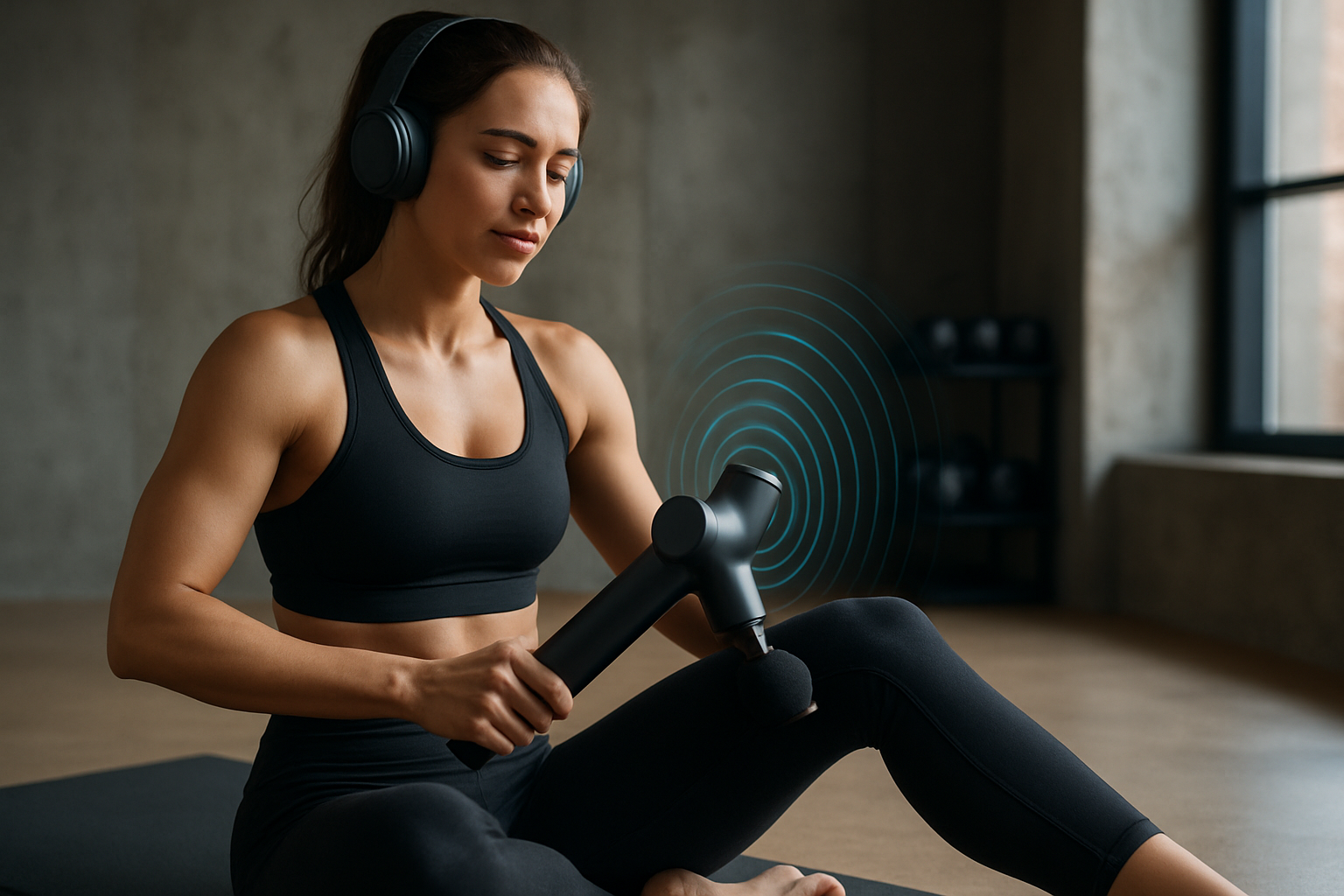Sonic Stimulation: The New Frontier in Fitness
Sound has always been an integral part of our lives, from the rhythmic beats of music that motivate us during workouts to the soothing melodies that help us relax. But what if sound could do more than just provide a backdrop to our fitness routines? Enter sonic stimulation, a cutting-edge approach that's reshaping the landscape of physical wellness. This innovative technique harnesses the power of carefully calibrated sound waves to enhance muscle performance, accelerate recovery, and optimize overall fitness outcomes. As the fitness industry continually evolves, sonic stimulation stands out as a groundbreaking method that combines the latest in acoustic technology with our understanding of human physiology. Let's dive into this fascinating world where sound becomes a tangible force in sculpting our bodies and elevating our fitness potential.

Research has shown that specific frequencies can target different physiological responses. For instance, frequencies in the 30-50 Hz range have been found to enhance muscle activation, while those between 100-120 Hz may aid in pain relief and muscle relaxation. By carefully modulating these frequencies, fitness professionals can tailor sonic treatments to achieve specific goals, from improving muscle strength to enhancing flexibility and recovery.
Sonic Tools and Technologies
The implementation of sonic stimulation in fitness settings has led to the development of specialized equipment. These range from full-body sonic platforms to targeted applicators for specific muscle groups. One of the most popular devices is the sonic vibration plate, which transmits sound waves through a platform on which users stand or perform exercises.
Other innovative tools include sonic massage guns, which combine traditional percussive therapy with acoustic stimulation, and wearable sonic devices that can be strapped to various body parts during workouts. Some high-end fitness centers have even begun incorporating sonic chambers, where individuals can immerse themselves in a full-body sonic experience designed to optimize their training or recovery sessions.
Enhancing Muscle Performance and Recovery
One of the most promising applications of sonic stimulation is in enhancing muscle performance. Studies have indicated that exposure to specific sound frequencies can increase muscle activation and power output. This is particularly beneficial for athletes and fitness enthusiasts looking to maximize their training efficiency.
In terms of recovery, sonic stimulation has shown potential in reducing muscle soreness and accelerating the healing process. The vibrations can help to flush out metabolic waste products, reduce inflammation, and promote better circulation to fatigued muscles. This makes it an attractive option for those engaged in high-intensity training or individuals recovering from injuries.
Cognitive Benefits and Mind-Body Connection
Beyond its physical effects, sonic stimulation in fitness contexts has shown intriguing cognitive benefits. The rhythmic nature of sonic waves can help synchronize brain activity, potentially improving focus and mental clarity during workouts. Some practitioners report enhanced mind-body connection, allowing for better form and more intentional movement patterns.
Furthermore, the immersive nature of sonic stimulation can create a meditative-like state, reducing stress and anxiety often associated with intense physical exertion. This mental relaxation, combined with the physical benefits, creates a holistic approach to fitness that addresses both body and mind.
Integration into Fitness Routines and Classes
As sonic stimulation gains traction in the fitness world, innovative instructors and trainers are finding creative ways to incorporate it into existing routines and classes. Some yoga studios, for instance, have begun offering “sonic yoga” sessions, where traditional poses are practiced on vibrating platforms or in rooms equipped with specialized sound systems.
High-intensity interval training (HIIT) classes are also experimenting with sonic elements, using pulsed sound waves to signal interval changes or to provide an extra challenge during specific exercises. Even traditional weightlifting routines are being reimagined with the addition of sonic stimulation, with some gyms offering “sonic strength” sessions that combine resistance training with acoustic enhancement.
Challenges and Considerations
While the potential of sonic stimulation in fitness is exciting, it’s not without its challenges. One of the primary concerns is the need for proper calibration and application of sound frequencies. Incorrect use or overexposure could potentially lead to adverse effects, highlighting the importance of trained professionals in administering sonic treatments.
There’s also the question of accessibility. Currently, many sonic fitness technologies are expensive and primarily available in high-end gyms or specialized clinics. As the field grows, there’s a need for more affordable and user-friendly options to make sonic stimulation more widely accessible.
Additionally, more long-term studies are needed to fully understand the effects of prolonged exposure to sonic stimulation in fitness contexts. While initial results are promising, the scientific community continues to investigate potential long-term impacts and optimal usage protocols.
In conclusion, sonic stimulation represents an exciting frontier in the world of fitness and wellness. By harnessing the power of sound, this innovative approach offers a unique way to enhance physical performance, accelerate recovery, and promote overall well-being. As research progresses and technologies evolve, we can expect to see sonic stimulation playing an increasingly significant role in shaping the future of fitness. Whether you’re an elite athlete looking for that competitive edge or a fitness enthusiast seeking new ways to optimize your workouts, the world of sonic stimulation offers a fascinating glimpse into the harmonious intersection of sound and physical excellence.





